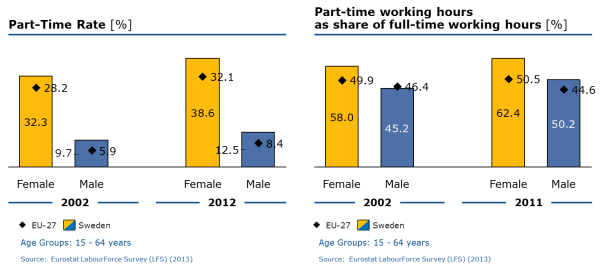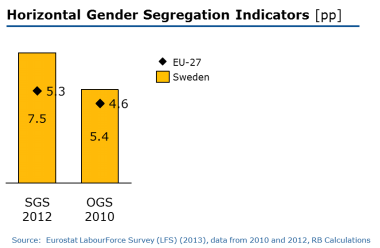Here’s an interesting experimental finding: Sex differences in labor supply elasticity suggest that guaranteed income and negative income taxes reduce female labor force participation relative to men.
This result comes from Gary Burtless’s 1988 survey of four Guaranteed Income experiments conducted in the late ‘60s and 1970s. The experiments cover a range of enrollee characteristics: low income families in rural Iowa and North Carolina, middle income folk in vibrant parts of Seattle and Denver, black families in Gary, Indiana, and poorer white, black, and hispanic residents in declining urban regions of New Jersey and Pennsylvania.
In each experiment, families receiving a guaranteed income reported reduced work hours relative to the control group, but the size of the response differed markedly depending on whether the participant was a man or a woman. A weighted average of the four studies indicates married men were inclined to reduce their work hours by 7%, nearly 119 fewer hours worked per year, compared to a 17% decline in hours worked by married women. The largest reduction in work occurred in Seattle-Denver experiment, which was also the most generous. Fewer hours translated to a proportionate drop in earnings, with single female heads of households showing a nearly identical response as their married counterpart.
In other words, were a guaranteed income to be instituted nationally, we’d likely see the gender pay gap increase.
Of course, this must be caveated with the fact that all the experiments Burtless reviewed suffered from a number of methodological shortcomings, including the fact that participants probably under-reported their work effort in order to receive larger benefits. Although that point alone cannot account for the gender-gap, it does point to the importance of further, more carefully controlled research. For instance, GiveDirectly’s plan to provide a guaranteed income to thousands of households in rural Kenya and Uganda will no doubt capture the resultant gender dynamics much more rigorously.
The Nordic Paradox
Nonetheless, these findings are broadly consistent with what’s become known as the Nordic Paradox: the finding that social democracies like Sweden’s have more gender-segregated labor markets compared the United States and the rest of the EU, despite an undeniably greater cultural commitment to gender equality.

For example, the Eurostat Labour Force Survey reveals women in Sweden work part-time at a significantly higher rate than the rest of the EU. They also opt into more “typically-female” sectors of the economy, as shown by “sectoral gender segregation indicator” or SGS, defined as the weighted average difference in in gender representation across all economic sectors (i.e., share of all male employees in an economic sector minus share of all female employees in the same economic sector).

Of course, this is only a paradox if one defines gender equality as parity within a set of narrow economic outcomes. A liberaltarian understanding of gender equality instead suggests focusing on individual autonomy. Below the aggregation of statistics, we should ask whether Nordic women are free to choose, or are their choices being unduly constrained, be it by social sanction, economic scarcity, or legal mandates?
Cultural pressure seems unlikely, since the Nordic countries are the most egalitarian countries in the world—with Sweden, for example, having the “fourth-largest female representation in the corporate boards of listed companies and the fifth-largest female representation in the parliament.”
Instead, the evidence suggests that, if anything, the Nordic welfare system and parental leave model enhance autonomy by improving the “best alternative to a negotiated agreement” for men and women alike. Women are thus enabled (on average and in large samples) to express their preference for working fewer hours and taking different kinds of jobs, to be compensated for otherwise unpaid home work, and to gain independence from the income of their husbands.
This results in similar aggregate pay gaps as almost everywhere (15% in the case of Sweden), but combined with extremely high levels of female life satisfaction and happiness with work-life balance. Contrast that to the EU27 country with the smallest pay gap, Romania, which achieves its above average pay equity thanks to an economy that still employs around 30% of its people in grueling, low skill agricultural jobs.
The lesson is that, even under enlightened cultures, closing the gender pay gap is not easily amenable by progressive public policy—in fact, it may even be exacerbating. But as long as the gap is a reflection of increased autonomy on the part of women, why should it matter?